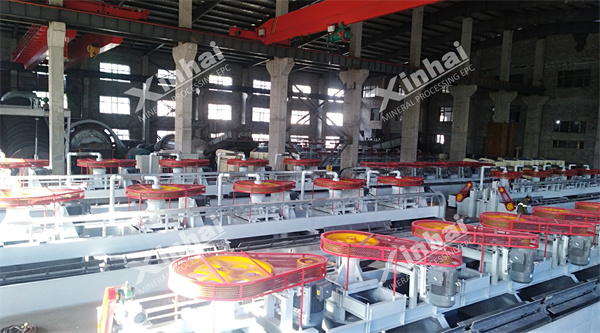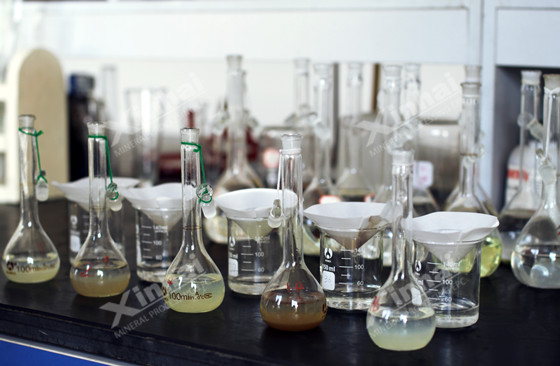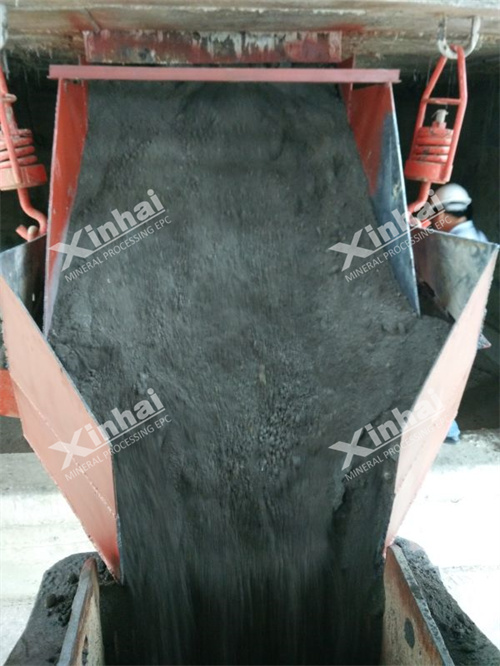If you want to know more information (such as product/process price, etc.), please contact us 24-hour telephone
Graphite, a sleek, natural carbon crystal, shines with a metallic glow and carries electricity like a champ. You’ll find it in everything from batteries to lubricants, steel plants to fire-resistant materials. But to make it useful, graphite needs serious cleanup to hit high purity and the right flake size for industries.
Raw graphite ore starts out rough, with low carbon content. To be worth much, it’s got to reach 90% or even 95% pure carbon. Lucky for us, graphite loves to float naturally, so graphite flotation methods are the top choice for purifying it. Its water-hating nature makes flotation a great fit for turning low-grade ore into something valuable.

Mechanical flotation happens in big, stirred-up tanks. Workers mix ground graphite ore with water, then pump in air to make bubbles. Since graphite doesn’t like water, it grabs onto those bubbles and floats to the top. A frothy layer forms, which gets scooped off to collect the graphite.
It’s not a one-and-done deal. The process starts with crushing the ore into smaller bits. Then, it’s ground up—sometimes multiple times—to free the graphite from other minerals. Some material gets sent back for another round to make sure nothing good is wasted. It’s a grind, no pun intended, but it gets results.
Column flotation swaps out tanks for tall, slim cylinders. These columns let bubbles and graphite particles mingle better, which means cleaner separation. The mix spends more time in the column, so it’s great for tricky, fine-grained, or low-quality ores.
Unlike mechanical tanks, columns don’t churn as hard. This keeps graphite flakes whole, which is a big deal since bigger flakes fetch higher prices. For a mine in Quebec, switching to columns boosted their high-grade output by 12%. It’s a solid choice for anyone chasing top-dollar graphite.
Froth flotation is the king of graphite flotation methods. It separates graphite from junk minerals, called gangue, using special chemicals called reagents. These tweak how minerals act in water.
Here’s the deal: reagents make graphite particles hate water even more. When air bubbles hit them, the graphite sticks and floats up in a frothy layer. Workers skim it off, leaving the unwanted stuff behind. The setup’s simple, doesn’t use much energy, and keeps costs down. It’s been around forever, and honestly, it’s hard to beat.

A few key chemicals make graphite flotation methods work like a charm:
Collectors: Stuff like diesel oil or kerosene coats graphite to help it stick to bubbles.
Frothers: Things like pine oil or butyl ether create a sturdy froth to carry graphite up.
pH Adjusters: Lime or sodium carbonate tweaks the water’s chemistry for better results.
Depressants: Water glass, for example, keeps quartz and other impurities from floating.
Each chemical has its own job. Collectors make graphite extra water-repellent. Frothers hold the froth together. pH adjusters set the stage, and depressants stop unwanted minerals from crashing the party.
Reagents are choosy—they stick to minerals based on what they’re made of. For instance:
Diesel oil latches onto graphite because it naturally shrugs off water.
Frothers, like alcohol-based chemicals, make bubbles tough enough to haul graphite to the surface.
Depressants, like water glass, make silicates love water, so they sink while graphite floats.
Mixing ore with these chemicals lowers the surface tension between graphite and other minerals. It’s like giving graphite a free ride to the top while the junk stays down. A mine in Brazil used this trick and hit 94% purity with just the right mix.
Picking the right graphite flotation method changes everything—how much graphite you get and how clean it is. Mechanical tanks are great for big, chunky flakes but can smash delicate ones with all that stirring. Column flotation gives purer results but needs careful control, like watching air flow or water levels closely.
Not all graphite is the same. Large-flake graphite floats like a dream. Dense crystalline types are decent but trickier. Cryptocrystalline graphite? It’s the worst to process. A mine in India learned this the hard way—using mechanical tanks on fine ore dropped their recovery to 80% until they switched to columns. Matching the method to the ore is everything.

How much and what kind of reagents you use makes or breaks recovery and purity. Too much, and you get impurities sneaking in. Too little, and you lose graphite to the waste pile. It’s a tightrope walk.
Mines tweak their reagents for their specific ore. A plant in South Africa, for example, uses kerosene and pine oil to hit 91% recovery on medium-grade ore. New, eco-friendly reagents are getting popular too. Lab tests are key—running trials helps find the perfect mix, like how a Madagascar mine boosted recovery from 84% to 92% by tweaking their frother.
Graphite ore is messy, often mixed with metals like iron oxide or non-metals like quartz. These make separation a pain. Iron can cling to graphite, dragging down purity. Quartz loves to float unless depressants like water glass step in.
Other headaches? Keeping flakes whole during grinding is tough—too much force, and big, valuable flakes break. Water chemistry can mess things up too. A mine in Australia saw recovery drop 8% when their water’s pH shifted unexpectedly. They had to adjust their reagents fast to fix it.
Want better recovery with graphite flotation methods? Try these practical steps:
Test the ore in a lab first. A mine in China caught a 4% purity dip early by doing this.
Adjust grinding based on flake size. Delicate ones need a soft touch.
Run lab trials to nail the right reagents mix.
Watch pH and bubble size like a hawk. Small shifts can ruin everything.
Use extra cleaning stages for purer graphite. A Sri Lanka plant hit 97% purity with four rounds.
These tweaks, paired with smart reagents, can work wonders. A small mine in Mozambique, for instance, fiddled with their frother and jumped from 86% to 94% recovery. It’s all about getting the details right.
By nailing the flotation process and picking the best reagents, mines can pull more graphite and make more money. Graphite’s huge for batteries these days, so doing this right is a big win. A well-planned setup not only grabs more graphite but also cuts costs, which is what every mine’s after.